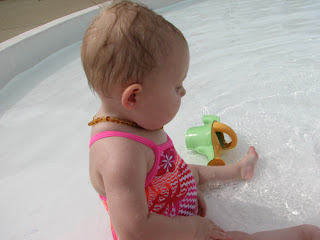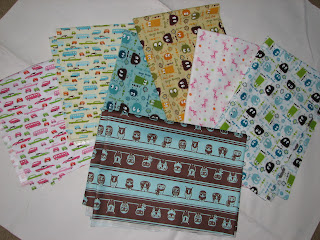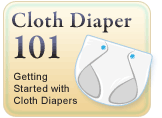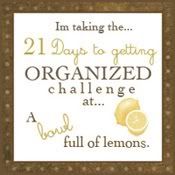I am not usually a fan of Parents magazine.
I mean, nothing against them, I just prefer to spend my money on subscriptions to magazines like Mothering, Kiwi , or The Green Parent- something that fits my parenting style and outlook a whole lot better.
For some reason, I have been getting Parents magazine for quite a while now (perhaps as a baby gift someone purchased a subscription for us and forgot to let us know?)- it's okay, has some good tips for general parenting "stuff" now and then, usually a neat recipe or two. But, on the whole, I'm usually dissappointed in what it's pages hold.
HOWEVER- this most recent issue contained a nice surprise! I was so pleased to see this kind of information in a place- like Parents- that will give it a lot of public attention , that I decided to share it here.
{Just as a side note, one of my favorite "safe" places to find plastic "stuff" is The Soft Landing- check it out the next time you're in need of a new item. At the very least it will give you a name brand or specific item to look for when you're at the store.}
Hopefully a lot more companies will begin to take note soon- and if not, hopefully more people will become better educated (myself included!) and be better able to keep their families safer.
How to Keep Your Family Safe from Toxic Chemicals
BPA ... Phthalates... You know they can be dangerous for your family, but you may not know all the ways they enter your body, or -- most important -- how you can limit your exposure. Parents investigates.
By Virginia Sole-Smith
Amy Ellings thought she knew what to expect last year when she agreed to donate blood for a study that would measure the levels of chemicals in her body. It focused on pregnant women in their second trimester in order to gauge what kind of chemical "body burden" they might be passing on to their developing baby. It sounded a little sci-fi, but Ellings, of Olympia, Washington, knew she led a healthy lifestyle: "I'm a public-health nutritionist, so I was interested to see the results, but I figured everything would be normal."
Not quite.
Two months after she gave birth to baby Nick, Ellings learned that her blood samples had contained 12 different chemicals known as endocrine disruptors, which can interfere with the body's ability to produce hormones. Two of these chemicals, bisphenol A (BPA) and diethyl phthalate (DEP), were at levels higher than those found in 90 percent of American adults. "I was blown away," says Ellings. She wondered whether she'd been exposed to these chemicals because she'd grown up in a small industrial town. But BPA and DEP break down quickly, which means her blood test revealed only what her body had accumulated within the previous three days. "I was shocked to learn what my unborn baby and I were exposed to," she says.
You might think Ellings is an isolated case, but biomonitoring studies show that these endocrine-disrupting chemicals (or EDCs) are now found in virtually all of us. The Centers for Disease Control and Prevention (CDC) has identified detectable levels of BPA, for instance, in 93 percent of people tested, and phthalates like DEP in at least 75 percent of the population. "These chemicals weren't in most consumer goods as recently as 40 years ago," says Parents advisor Philip J. Landrigan, M.D., professor of pediatrics at the Mount Sinai School of Medicine, in New York City, and director of its Children's Environmental Health Center. "Now they're in our bodies, and we don't understand all the ways they could impact our health because no previous generation of humans has ever been exposed to them."
What we do know: As the environmental exposures and chemical burden on our bodies has risen, so have rates of diseases, particularly those that impact kids, including asthma, childhood cancers, autism, and ADHD. Hormones, and chemicals that mimic them, may play a key role in the evolution of these health problems because they work as chemical messengers, traveling through the bloodstream to affect the development of tissues and organs, as well as influencing body processes like metabolism and reproduction. "There is no more dangerous time for this toxic exposure to occur than during pregnancy and early childhood, when organ systems are still in development," notes Andrew Weil, M.D., founder and director of the Arizona Center for Integrative Medicine at the University of Arizona.
But nobody knows what level of toxic exposure might trigger a particular disease. Even though many EDCs break down quickly, their levels are constantly increasing in our body because we encounter them every day -- in our food, beauty products, and even from the furniture in our own home.
The New Pollution
EDC exposure works like this: You go shopping and stock up on canned goods, baby formula, cleaning supplies, and shampoo, all of which may either contain BPA, DEP, or other endocrine disruptors or absorb them via their EDC-containing cans and packages. Then you eat, breathe, and in some cases, rub these chemicals directly on your skin. Once they're in your body, you release small doses into our waterways every time you urinate. And when you're finished with the products, you send the leftovers or their containers to break down in a landfill, allowing them to circulate further in the environment.
EDCs do their damage early on, causing small changes to a fetus's developing cells that may have a ripple effect throughout that child's life. "We used to think that the
placenta protected a fetus from these kinds of exposures, but studies have shown that phthalates and other endocrine disruptors cross the placenta barrier," says Dr. Landrigan. The Environmental Working Group, a nonprofit advocacy organization, released a biomonitoring report last year that detected more than 200 environmental toxins in the cord blood of newborn babies. Fetuses accumulate these chemicals in higher concentrations than their moms do because their immature liver and kidneys can't excrete them as well as adult organs can. Although Ellings says that 7-month-old Nick is happy and healthy, it's too soon to know whether his early chemical exposures will lead to future problems.
These are three of the most common EDCs and the specific ways you and your family are exposed.
Bisphenol A (BPA)
Bisphenol A (BPA), pronounced [bis-FEEN-al A]
What it is: An industrial chemical that is used to make some types of epoxy resins (which hold things together) as well as polycarbonate plastic, a hard, shatterproof plastic used in some food-storage containers
Where it is: The linings of metal food containers and drink cans and some aluminum water bottles; any food containers, baby bottles, or other plastics that are labeled #7; CD cases; eyeglasses; dental composites and sealants
The risks: "Since the 1930s we've known that BPA can mimic the effects of estrogen in the body," says Richard Denison, Ph.D., a senior scientist with the Environmental Defense Fund. Studies on lab animals have found that early exposures to BPA can predispose them to develop prostate and breast cancers later in life; it may also lower fertility by impairing normal development of eggs and sperm. Researchers at The University of North Carolina at Chapel Hill reported in March that 2-year-old girls who had been exposed to higher prenatal levels of BPA displayed more aggression and hyperactivity, while other research has suggested links between BPA and increasing asthma rates and cardiovascular problems.
Phthalates
Phthalates, pronounced [THA-lāts]
What they are: Chemicals, including diethyl phthalate (DEP), dibutyl phthalate (DBP), and di(2-ethylhexyl) phthalate (DEHP), added to vinyl and other plastics to increase flexibility and to personal-care products to keep their fragrances
Where they are: Anything vinyl; most soaps, lotions, and hair products, especially those with "fragrance" or "parfum" in their ingredients -- all of which may off-gas or degrade, releasing phthalate particles into household dust. Phthalates were banned for use in products for kids under 3 by the Consumer Product Safety Improvement Act of 2008, but they're still lurking in many other plastic toys, and any baby products made before the ban.
The risks: "Exposure to phthalates is associated with reduced testosterone levels in kids and adults," notes Tracey Woodruff, Ph.D., director of the Program on Reproductive Health and the Environment at the University of California, San Francisco. Researchers at the University of Rochester have found that prenatal phthalate exposure correlated with subtle signs of feminization (like undescended testicles) in baby boys and less masculine behavior as the boys got older. In April, a study at Mount Sinai's Children's Environmental Health Center also found that children exposed to phthalates in the womb were more likely to exhibit symptoms of ADHD between the ages of 4 and 9.
Flame Retardants
What they are: Polybrominated diphenyl ethers (PBDEs) are used in products to lower the risk and inhibit the spread of fire.
Where they are: On electronics, furniture, carpets, children's pajamas, and other household items that are required to meet flame-retardant safety standards. As these materials age, they release PBDEs into household dust, which we then breathe in. The CDC estimates that 97 percent of Americans have detectable levels of PBDEs in their body. PBDEs are now banned in several states, so manufacturers will be phasing them out of consumer goods over the next few years.
The risks: PBDEs don't break down as quickly as most other endocrine disruptors, so they persist in the environment and in the body for years. Women with higher levels of PBDEs may be half as likely to conceive as women with lower levels, according to a recent study from University of California, Berkeley. Children who had higher concentrations of PBDEs in their umbilical-cord blood at birth scored lower on mental and physical development tests between ages 1 and 6, according to research from the Columbia University Center for Children's Environmental Health.
How We Got There
Why are such potentially dangerous chemicals allowed in so many household products in the first place? "You can't put a new car on the market without extensive crash testing first, but there aren't any similar precautions in place for chemicals," explains Rick Smith, executive director of Environmental Defence Canada and coauthor of Slow Death by Rubber Duck. When used as industrial chemicals, EDCs are regulated by the much-maligned Toxic Substances Control Act of 1976, which doesn't require that they be tested or proven safe before being used. Instead, it's up to the Environmental Protection Agency (EPA) to show that a chemical is unsafe -- that it poses an "unreasonable risk" -- before it can regulate or ban that chemical. "The bar is set so high that the EPA can essentially never meet it, and therefore dangerous chemicals are in all sorts of products," says Dr. Denison. Congress's original rationale for giving a pass to industrial chemicals like BPA, he explains, is that they weren't designed to be biologically active or get into our body in the same way pesticides or drugs would, and wouldn't pose the same risks. "Now we know that was naive. We should presume these chemicals could be a problem until their producers can prove otherwise," he says.
Some canned-goods manufacturers, such as General Mills (which makes Muir Glen Organic Tomatoes) and Heinz, are responding to consumer concerns. They're reformulating some of their products to be BPA-free or are planning to line their cans with safer chemicals (which they haven't yet identified). But public-health officials worry that until better procedures are in place to regulate claims like "BPA-free," consumers can't be assured seeing this term on a label means a product is safe. (Experts predict the next hallmark of safety may be products marketed as "EA-free," for estrogenic activity.) "At this point it's still better to choose items that are BPA-free," says Dr. Woodruff.
Meanwhile, some experts continue to believe that the EDC levels found in biomonitoring studies are too low to be a cause for concern. "It's the amount of any given chemical, not its presence or absence, that determines its potential for harm," says Carl Winter, Ph.D., a toxicologist and director of the FoodSafe Program at the University of California, Davis, as well as the scientific spokesperson for a trade group called the Institute of Food Technologists. Still, consider a 2005 study conducted at Carnegie Mellon University, in Pittsburgh, which found that mice exposed to BPA in utero at a level of just 25 parts per trillion experienced double the amount of milk-duct growth as mice with no BPA exposure. That alone would lead you to believe that even the tiniest amount could affect your body.
"Finding any synthetic chemical in a person's body should be a big red flag that we need to really study that chemical," says Gina Solomon, M.D., a senior scientist at the Natural Resources Defense Council. The American Medical Association issued a statement last fall calling for the government to increase regulation of EDCs in consumer products. And certain EDCs are banned in multiple states and cities, including Connecticut, Maryland, Michigan, Washington, and Wisconsin, Chicago, and New York's Suffolk County. Suffolk County, for instance, issues a $500 fine to stores that sell baby bottles or sippy cups that are made with BPA.
In April, Senator Frank Lautenberg (D-NJ) and Congressman Henry Waxman (D-CA) introduced Senate and House versions of the Safe Chemicals Act of 2010, which would overhaul the Toxic Substances Control Act. Under this new law, manufacturers would have to demonstrate that new chemicals are safe before they can put them on the market, and all existing chemicals would have to be assessed for safety over the next five to 15 years. The Obama administration has signaled that it will support the bill. And in April, a panel that advises the president on cancer issued a 200-plus-page report calling for all levels of government "to protect every American from needless disease through rigorous regulation of environmental pollutants," including BPA. "We expect the chemical industry to fight reform tooth and nail, but there's broad bipartisan support for more regulation because nobody in his right mind supports exposing kids to toxins," says Smith.
Making a Difference
With EDC exposure so ubiquitous, you may wonder if you can keep your family safe. "The good news is that it's completely doable to make small changes that have real benefits," says Dr. Woodruff. For example, many of these chemicals pile up in household dust, so dusting, wet mopping, and vacuuming frequently can reduce your family's exposure, especially if your child is crawling and at that stage where he's putting everything in his mouth. (See "Safer Swaps," below, for more simple substitutions.) "Since many of the EDCs have a short half-life, they can be quickly flushed out of your body once the exposure is removed," explains Smith. Which is exactly what we want to hear as we wait for chemical-policy reform and for scientists to understand the full scope of these daily yet preventable EDC exposures. As Amy Ellings says, "You shouldn't have to worry every time you shop for your family."
Safer Swaps
Whether you make one, some, or all, your family's health will benefit -- and fast.
Phthalates
Instead of: Personal-care products that list "fragrance" as an ingredient
Try: Fragrance-free shampoo, moisturizer, and other staples. Burt's Bees, California Baby, and Earth Mama Angel Baby are three phthalate-free brands. Find safer products by checking their ratings in the Environmental Working Group's Skin Deep Cosmetic Safety Database at cosmeticsdatabase.com.
Instead of: Heavily fragranced cleaning products
Try: A spray bottle filled with a solution of half vinegar, half water. Or use Clorox, Seventh Generation, or Method, cleaning-product brands that are free of phthalates and most other EDCs.
Instead of: Buying new toys without knowing what they may contain
Try: Seeing whether their test results are listed on healthystuff.org, an online database of more than 5,000 products run by the Ecology Center, a Michigan environmental nonprofit.
BPA
Instead of: A water bottle that's made of plastic or aluminum (which may be lined with BPA) Try: Stainless steel
Instead of: Canned goods
Try: Soups or tomatoes that are packaged in glass jars; fresh or frozen produce; dried beans
Instead of: Liquid formula in metal cans
Try: Powdered formula in cardboard or plastic. If you must use liquid, choose concentrate in glass or plastic.
Instead of: Microwaving in plastic or pouring hot liquids into BPA-containing bottles or containers Try: Transferring your leftovers to a glass or ceramic bowl before you heat them up, heating baby formula in BPA-free bottles or by putting the bottle in a bowl of warm water.
Instead of: Using any plastic, especially baby bottles and other children's products, labeled #7 (polycarbonate) or #3 (PVC)
Try:Remembering this mantra: "4, 5, 1, and 2 -- all the rest are bad for you." Look for a product labeled BPA-free and find out why it's safer. WeilBaby bottles, for instance, are made with Tritan (a copolyester that is also free of phthalates) and manufactured in the U.S. on equipment that makes only BPA-free products. BornFree Eco-Friendly Baby Bottles are made from polyphenylsulfone (PPSU), a plastic that does not contain BPA, PVC, or phthalates, and can be returned to the manufacturer for recycling.
Lifewithoutplastic.com has more ideas for affordable, nonplastic food-storage containers, bottles, and children's goods. When you do use plastic of any kind, don't put it in the dishwasher.
PBDEs
Instead of: Carpets, curtains, and furniture that have been treated with flame retardants
Try: Naturally fire-resistant wool, hemp, and cotton. (With furniture, and other big purchases, before you buy always ask the manufacturer whether it uses a chemical coating.)
Take Action for Tougher Chemical Laws
Check out these Web resources to get involved.
Through the Environmental Defense Fund, send a letter to your Congressperson, letting him or her know that tougher chemical regulation is important to you:
edf.org/chemicalsafety.
Stay up-to-date on pending legislation with the Safer Chemicals, Healthy Families coalition:
saferchemicals.org.
~Originally published in the August 2010 issue of Parents magazine.














































.jpeg)


























